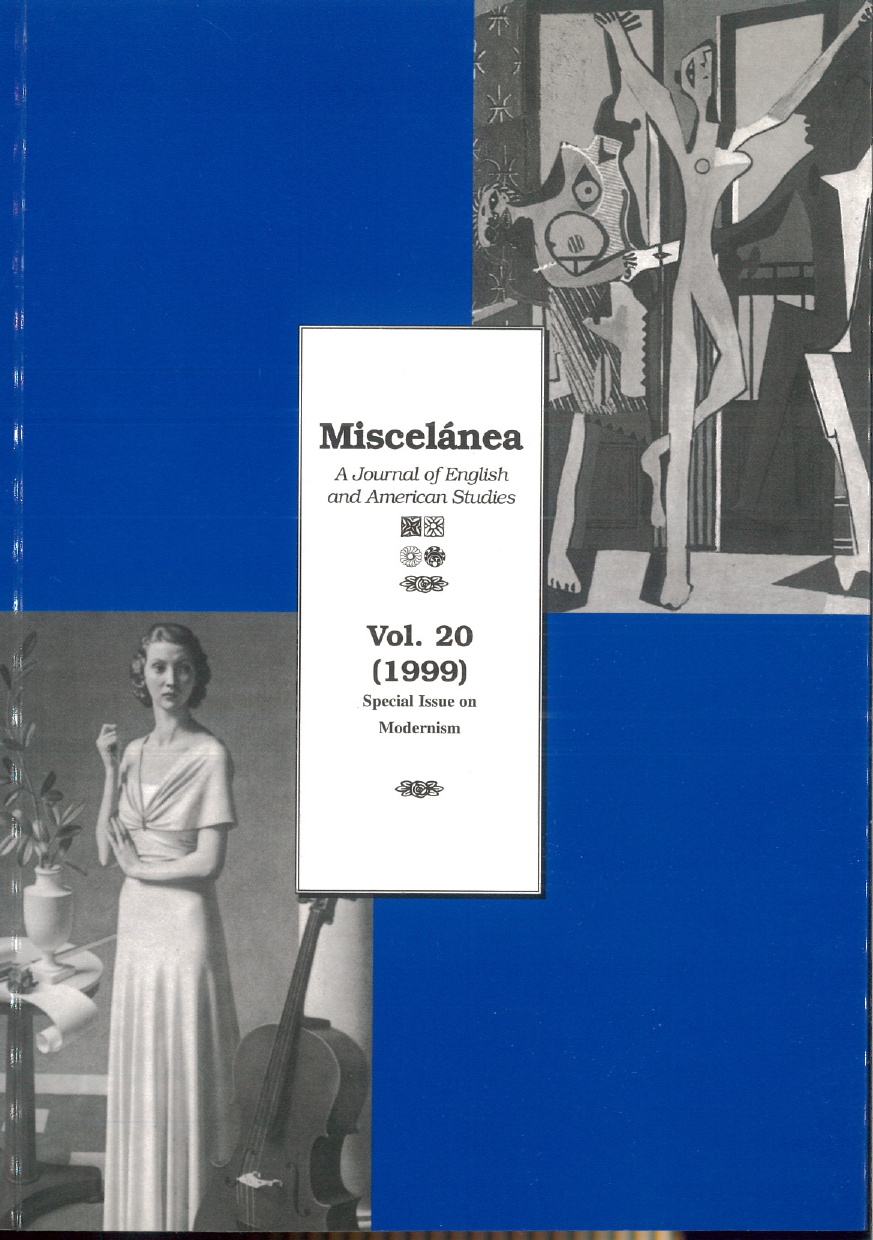Modernism in Black and White: American Jazz in Interwar Europe
DOI:
https://doi.org/10.26754/ojs_misc/mj.199911237Abstract
This essay is partly about how and why Paris became the great good place for American jazzmen and women in the 1920s and 1930s, especially those who were not merely black but whose sexuality made life back home or elsewhere— difficult. It is also about how jazz music became written about by Europeans, beginning as early as 1919 with Ernst-Alexandre Ansermet, conductor to the Ballet Russe, for whom Sidney Bechet's clarinet-playing has the "primitive" force analogous to the authentic or even autochthonous, primal energy sought for and found, to their own satisfaction, by early modernists in Africa and the Pacific Islands, and including Constant Lambert, who in his Music Ho! (1934) makes much of the music of Duke Ellington. Lambert regards Ellington's compositions as reaching the same level of achievement as, among others, Ravel, Hindemith and Stravinsky. Jazz thus becomes available and assimilated to modernist enterprises —in the fine arts, in literature, and, of course, in music. But jazz musicians were unlike any other creators within the modernist movement in that they never made theoretical statements about their music. Nor did they issue manifestoes. They made the music, others explained it.
Display downloads
References
ANSERMET, Ernst. 1919. "Bechet & Jazz Visit Europe". In de Toledano, R. (ed.).
(1947) 1966. Frontiers of Jazz. London: Jazz Book Club Edition.
BAKER, Josephine. 1978. Josephine. London: W. H. Allen.
BECHET, Sidney. (1960) 1964. Treat It Gentle. London: Corgi.
BROOKER, Peter. 1996. New York Fictions: Modernity, Postmodemism, The New Modem. London: Longman.
CHJLTON, John. 1987. Sidney Bechet: The Wizard of Jazz. London: Macmillan. DOI: https://doi.org/10.1007/978-1-349-09591-9
COLLIER, James Lincoln. 1987. Duke Ellington. London: Michael Joseph.
DYER, Geoff. 1991. But Beautiful. London: Jonathan Cape.
FITZGERALD, F. Scott. (1925) 1958. The Great Gatsby. Harmondsworth: Penguin.
JAMES, Bumett. 1984. Coleman Hawkins, New York: Hippocrene Books.
JONES, Max. 1987. Talking Jazz, London: Macmillan.
LAMBERI, Constant. (1934) 1948. Music Ho! Harmondsworth: Penguin.
LUCAS, John. 1997. The Radical Twenties. Nottingham: Five - Leaves Publications.
OGREN, Kathy J. 1989. The Jazz Revolution: Twenties America and the Meaning of Jazz. New York: Oxford U. P. DOI: https://doi.org/10.1215/10439455-4.2.94
SHAPIRO, Nat and Nat HENTOFF, (1955) 1962. Hear Me Talkin' To Ya. Harmondsworth: Penguin.
SHATTUCK, Roger. 1968. The Banquet Years: The Origins of the Avant-Garde in France 1885 to World War I. New York: Vintage Books.
STEARNS, Marshall. 1958. The Story of Jazz. New York: Mentor Books.
THOMSON, George. 1941. Marxism and Poetry. London: Lawrence and Wishart.
WAIN, John. 1986. Dear Shadows: Portraits from Memory. London: Macmillan.
WILLET, John. 1984. The Weimar Years: A Culture Cut Short. London: Thames and Hudson.
Downloads
Published
Issue
Section
License

This work is licensed under a Creative Commons Attribution-NonCommercial 4.0 International License.


